|
On June 15th the American Kennel Club (AKC) announced that it had recognized 3 ‘new’ breeds – two of which aren’t new at all, and the third was developed from an already existing breed. 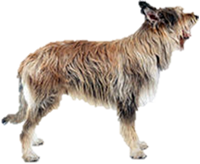 First up we have the Berger Picard, also known as the Picardy Shepherd, which hails from France. Traditionally the Berger Picard is used to herd livestock (and was accepted in the Herding Group), and is closely related to the other French herders, the Briard and Beauceron. The only thing new about the Berger Picard is its appearance on the American stage, as they are believed to be the oldest of these three breeds. 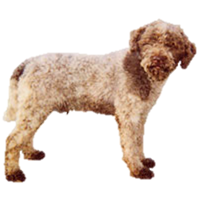 Next is the Lagotto Romagnolo, or Romagana Water Dog, an Italian breed. Like the other water dogs this dog has a tight, curly coat, reminiscent of the Poodle, Portuguese Water Dog, or Barbet. Classified in the Sporting Group, this breed’s specialty is to ‘hunt’ something that doesn’t move at all – truffles! Like the Berger Picard this is an old breed, known since at least the 16th century. Some experts have even boasted it is the oldest of the water dogs, although more often this title is given to the Barbet. 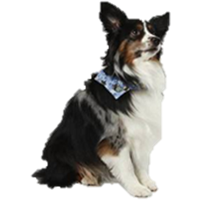 Last we have the Miniature American Shepherd, a miniaturized version of the Australian Shepherd. This breed originated in the United States in the 1960s from Aussies that were on the smaller side of their standards. Despite being a miniaturized version their fanciers have shied from tying ‘Australia’ to the breeds name, perhaps because their ‘parent’ is also from the United States. Like the Berger Picard the Miniature American Shepherd was designated to the Herding Group.
1 Comment
Our last spaniel entry will be the most controversial, as the category of water spaniel is not as clear as the land spaniels we reviewed in our first post. When spaniels were first categorized they were divided into three types: Land (flushing), Gentle (companions), and Water. Those in the water category over time became more specialized as retrievers, rather than flushing breeds, but still come from the same root stock. Some water dogs are easy to classify in the spaniel category, such as the American Water Spaniel and Boykin Spaniel, while others become much more difficult, like the Irish Water Spaniel. To simplify we will start by reviewing the easier breeds. It seems ironic that those that are clearly spaniels are the ones that are ‘newer’ creations, both from the United States, the American Water Spaniel and Boykin Spaniel. They have a clear resemblance to their ‘land’ cousins, just with tightly curled coats rather than feathered ones. Both can flush, track, and retrieve and are closely related, the American Water Spaniel being used in the Boykin Spaniel’s development. 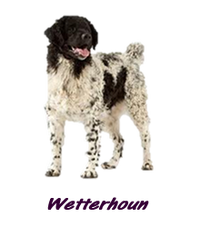 From The Netherlands we have the Wetterhoun, which was once interbred with one of the spaniels from our last post, the Stabyhoun. Both dogs were bred in the same region and were known to exist in one anothers' litters until formally separated. The Wetterhoun can be used to both flush and retrieve and held a secondary status as a farm dog. 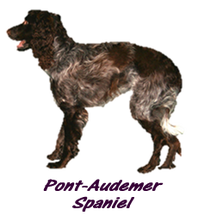 Like the other French spaniels, the Pont-Audemer Spaniel is classified by the Fédération Cynologique Internationale (FCI) as continental pointing dog, meaning that it can flush, point, and retrieve. This water spaniel does not have the traditional tight curls of the other breeds, save on it’s ears. 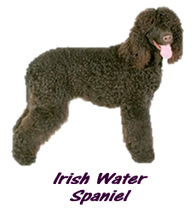 This leaves only the Irish Water Spaniel, which also works more as a retriever than a spaniel. However, it does descend from the extinct English Water Spaniel, so it is likely there is some common ancestry with the other spaniels. Adding the Irish Water Spaniel does leave one to ponder the true water dogs, after all, the Irish Water Spaniels other ancestor is almost certainly the Barbet. While it cannot be said that the Poodle, Lagotto Romagnolo, Portuguese Water Dog, or Spanish Water Dog are spaniels, it is true that somewhere the lines crossed and either the water dogs or the water spaniels are the ancestors of the other. In closing we’ve returned back to our first question – how many spaniels are there? It still depends on which ones you want to count. This next post will dive deeper in to the Spaniel tree, to look at the 'non-flushing' group and to become more debated. These breeds are certainly related to the Spaniels, but more distant cousins than those we examined previously. We will look at 16 additional breeds, the majority of which are French, German, or from the United Kingdom. We will start with the United Kingdom and their small family grouping of setters. This may sound like an odd addition, but setters were once known as ‘setting spaniels’ and although they have been developed along a different path their lineage with flushing dogs is evident. There are only four surviving setters, the English, Gordon, Irish Red and White, and Irish (solid red). The first mention of a setting spaniel traces back to the 1620s and it seems likely that these dogs shared the same ancestry as their flushing cousins. Instead of flushing birds these dogs were trained to freeze and ‘set’ when prey was located. All four setters are believed to have been developed around the 1700s, with the Gordon possibly being the oldest. Although the Irish Setter is more well-known than the Irish Red and White the latter has existed for longer. Next we will add the breeds that the Fédération Cynologique Internationale (FCI) classifies as Continental Pointers, spaniel type (excluding the Pont-Audemer Spaniel which will be in our last post on water dogs). Remember how we discussed before that in the United States the Brittany Spaniel is no longer classified as a spaniel? That is because these dogs are all-around gundogs instead of just being used to flush prey. Aside from the Brittany there are three other French breeds, the French Spaniel, Picardy Spaniel and Blue Picardy Spaniel. The French is the oldest, having existed since at least 1600s. The Picardy and Brittany are almost as old, dating back to the 1700s. The Blue Picardy was not developed until English Setter crosses were made to some bloodlines of the Picardy in the late 1800s. Germany has three Continental spaniel-like pointers; the German Longhaired Pointer, Large Münsterländer, and Small Münsterländer. Labeling the German Longhaired Pointer as a spaniel may seem odd, as it is closely related to the other German Pointers (Shorthaired, Wirehaired and Rough Haired). However in appearance it is more setter than pointer and it is likely that the English and Gordon Setters, along with the French Spaniels were used in its development. As for the two Münsterländers, the Large began life as a color variation of the German Longhaired Pointer and the Small is linked to the Deutscher Wachtelhund. The Deutscher Wachtelhund is a fourth dog from Germany that the FCI classifies as an actual spaniel – although like the French breeds listed above the it actually works as an all-around gun dog rather than as a spaniel. This leaves only the Drentse Patrijshond, Stabyhoun, Kooikerhondje, and Nova Scotia Duck Tolling Retriever. The Drentse Patrijshond and Stabyhoun are Dutch and closely related, both recognized as Continental Pointers by the FCI (spaniel type). They are very similar to the old type of spaniels, although aside from flushing they are adapt at pointing and retrieving. The Kooikerhondje is an anomaly as the FCI recognizes them as a flushing spaniel when they, along with the Nova Scotia Duck Tolling Retriever, are actually the only breeds that are decoy dogs. Decoys will actually entice ducks and waterfowl either into nets or within range of guns rather than flushing out prey. These dogs do both have spaniel blood in their veins, and both descend from the extinct English Red Decoy Dog. Next week we will finish the Spaniel tree by adding the water dogs, which is somehow even more complicated than the non-flushing list. We will continue our spaniel articles by looking at the small companion spaniels that were once known as Spaniel Gentles, kept by royalty and the wealthy. The only function these dogs had was to be spoiled - or as a bed warmer. There are three breeds in this group; the King Charles Spaniel, Cavalier King Charles Spaniel and the Continental Toy Spaniel. It is believed the oldest of these breeds is the Continental Toy Spaniel, having existed since the 1300s.
The Continental is more often known by the names the Fédération Cynologique Internationale (FCI) uses to split it into two varieties based on ear carriage, the Phalene (drop) and Papillon (erect). The Phalene is the oldest of the two types, although it is the name Papillon the breed is recognized under the American Kennel Club (AKC). France is credited with its origin but these miniaturized gundogs turned lap dogs were known throughout Europe. They were a favorite of Marie Antoinette and legend states she clutched one on her way to the guillotine. England's toy spaniel was a favorite of King Charles, a name it still carries throughout Europe, but is known as the English Toy Spaniel in the United States. Today's dog was the result of taking four similar varieties that had previously been divided by coat color and combining them into one breed standard; the Blenheim (white with red or chestnut), Ruby (reds), Prince Charles (tricolor) and King Charles (black with chestnut or tan). Some have suggested that these dogs with their shorter muzzles are actually descended from oriental breeds such as the Pug or Japanese Chin. However, it is more likely that these breeds were added to the bloodline as earlier dogs did not have shortened snouts. It was the short muzzles that led to the development of the Cavalier King Charles in the 1920s. The longer muzzle and more traditional dogs were becoming almost impossible to find, causing an American by the name of Roswell Eldridge to offer twenty-five pounds prize money to any person showing dogs with long noses at Crufts. After five years he was able to establish a breeding stock and the two were recognized as distinct breeds in the 1940s. For a moment let us return to original question of how many spaniel breeds there are. Certainly these three and the seven flushing dogs from our first post can be classified as such, each sharing ancestry that may or may not have originated in Spain, but the family tree's roots lie within Europe. From here the relations will grow more complicated and our "count" will become debated. Throughout the centuries the name spaniel has been given to more than a dozen breed of dogs, but when asked how many spaniels there are in the world of dogs that question can be hard to answer. It all depends on who you ask and which spaniels you want to count. Trying to use the title only makes it more difficult because breeds like the Tibetan Spaniel are not spaniels at all - but the little known Kooikerhondje is. To add another level of confusion the Brittany Spaniel in its homeland of France it is still known as the Epagneul Breton, but in the United States the spaniel was dropped. Why?
Perhaps we should start with what makes a spaniel a spaniel. The easiest answer would be spaniels were traditionally bred and trained to flush prey for hunters, but small companion dogs have also existed for just as long which are clearly spaniels. These dogs all share the same root ancestry and appearance, but their actual origin is unknown. Most scholars point to Spain, from the French word epagneul, but other theories involving Romans and Celts also exist. Due to the size of this question we will explore this family grouping in separate posts through over several days by looking at the early spaniels decedents both through type (appearance) as well as function. To simplify we have divided the spaniels into four groups: flushing, companion, non-flushing, and water. This specific post will explore the “true” spaniels – those that were specifically developed for flushing. There are seven breeds in this grouping, five of which hail from England. Each of these dogs descends directly from the early land spaniels and includes the English and Welsh Springers, English and American Cockers, Clumber, Sussex, and Field. These dogs are a tight grouping, beginning with the English Springer and English Cocker. These two were once so closely related that they were considered the same breed, separated only by size. Larger dogs were destined to become Springing Spaniels (also known at the time as Hawking or Starter) while their smaller littermates became Cocking Spaniels. It wasn't until the late 1800s that attempts were formally made to separate the two sizes. The English Cocker would also lead directly to the development of the Field Spaniel (due to breeders wanting a solid and slightly larger spaniel) and the American Cocker in the United States. The American Cocker is the only dog in this group that developed away from a hunting breed to become solely used as an companion. It was separated from the English Cocker by the American Kennel Club (AKC) in 1946. Ironically both of these dogs are known simply as 'Cocker Spaniel' in it's homeland, while the foreign cousin is give the title American or English. It is believed the Sussex and Clumber were created from crosses with the English Springer and hounds (the Clumber's hound addition being French rather than English). Both of these breeds came close to extinction after WWII and although they were saved their numbers have never truly recovered. Both are listed in their homeland as Vulnerable Native Breeds by the Kennel Club (KC) and the Sussex has been in the bottom ten of AKC registrations for several years. The only dog that may or not share these close relations is the Welsh Springer, which many experts believe to be older than the English breeds. It is mentioned in texts dating from the early 10th century, long before any documentation of spaniels in England. Once again the American Kennel Club (AKC) has released the most popular dog breeds in the United States according to their registrations. No dog lover was surprised to find the Labrador Retriever once again led the pack while the Golden Retriever and German Shepherd Dog rounded out the top three out of 178 recognized breeds. Aside from the recent rise in the French Bulldog it was a fairly predictable list - but what about the dogs at the bottom of the list? Are these dogs simply new breeds or falling out of favor? Certainly many of their fanciers would tell you they like their dogs being 'unpopular' as over and ill breeding plagues many top breeds. However, these numbers have a downside, as they dip too low it also affects the breeding pool. In our article we will take a closer look at the bottom ten breeds individually, both by the numbers and as a chance to get to know some 'uncommon' breeds.  #169 - Sussex Spaniel 2013 - #162 2009 - #159 The Sussex Spaniel was developed in the late 18th and early 19th century by A.E. Fuller in Sussex, England. After his death the breed became scarce and barely escaped extinction after WWII thanks to Joy Freer. Despite being saved their numbers have never been strong. In its homeland the Sussex is even more uncommon and is listed with The Kennel Club's (KC) as a Vulnerable Native Breed. 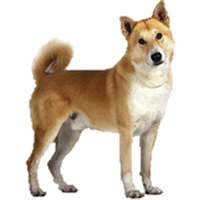 #170 - Canaan Dog 2013 - #164 2009 - #156 In the 1930s Rudolphina Menzel became fascinated with primitive dogs that had survived outside of human intervention in the Negev Desert. Through careful breeding and domestication she adapted these pariah dogs for military work. The Canaan Dog was first recognized by the Israel Kennel Club in 1973, but was not accepted by the AKC until 1989. It is estimated they number between 1200-1400 worldwide. 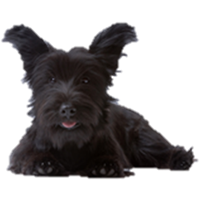 #171 - Skye Terrier 2013 - #161 2009 - #155 Legend states that the Skye Terrier owes its existence to a Spanish shipwreck that brought a Maltese off the coast of the Isle of Skye which bred with local terriers in the 1600s. Some have suggested that Welsh Corgis or the Swedish Vallhund may have been used in their development. Like the Sussex Spaniel, the Skye Terrier is also listed by the KC as a Vulnerable Native Breed. 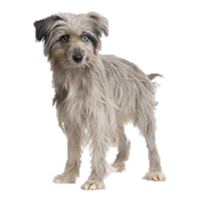 #172 - Pyrenean Shepherd 2013 - #169 2009 - #107 The Pyrenean Shepherd has worked with sheep in the Pyrenees Mountains of France for centuries alongside the Great Pyrenees. It is possible that another French herder, the Briard, was used in their development. In their homeland this is a common breed, both as a companion and as a working dog. 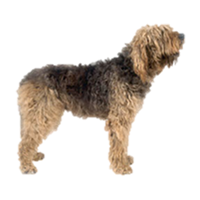 #173 - Otterhound 2013 - #172 2009 - #161 Possibly one of the rarest dog breeds today, the Otterhound has existed since the 13th century. Huge packs used to exist throughout England, tasked with hunting the 'vermin' otter from fishing waters. When the killing of otters was outlawed in 1978 this breed no longer had a place in the modern world. Another Vulnerable Native Breed only 22 pups were born in the United Kingdom in 2014. 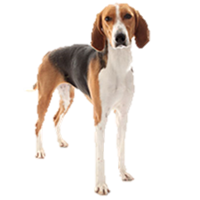 #174 - American Foxhound 2013 - #176 2009 - #162 The American Foxhound was bred from several European hounds in the 1600s, its main ancestor being the English Foxhound. While AKC registrations are low it is important to note that many American hunting dogs are registered with the United Kennel Club (UKC) rather than the AKC and some packs are not registered with either club. 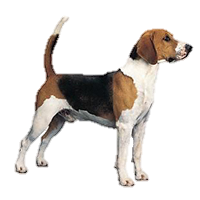 #175 - Harrier 2013 - #173 2009 - #163 The Harrier may be the oldest surviving scenthound with a documented pack tracing back to 1260. Although never recognized by the KC this breed does still exist in the United Kingdom. Its stronghold is Northern Ireland, where fox hunting is still legal and this breed is the locals' favorite hound for the sport. It is estimated at least 100 packs still exist there. 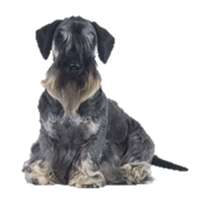 #176 - Cesky Terrier 2013 - #174 2009 - Unrecognized A fairly 'new' breed, the Cesky Terrier was not created until after WWII and was not recognized by the AKC until 2011. Still gaining a foothold in the United States it is the National Dog of the Czech Republic and not considered rare in its homeland. 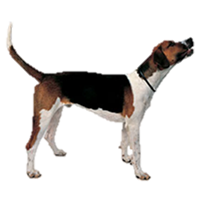 #177 - English Foxhound 2013 - #177 2009 - #164 The English Foxhound has existed since the late 16th century and although fox hunting is outlawed in its homeland it is not considered in danger there. Like the American Foxhound a large number of these dogs in the United States are actually registered through the UKC. 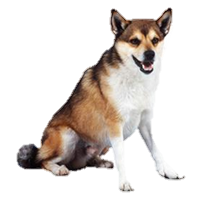 #178 - Norwegian Lundehund 2013 - #175 2009 - Unrecognized Norwegian Lundehund's were originally developed to hunt puffins off the coasts of Norway and were used extensively for this purpose from the 1600-1800s. One puffin hunting became illegal the breed became rare and was almost extinct after WWII and two distemper outbreaks. Today there are somewhere between 1500-2000 dogs worldwide, most remaining in Norway. In the end popularity really comes down to where you are located (although the Labrador Retriever still reigns supreme in many countries). Most of these 'rare' breeds still have high numbers in their homelands, or even with other kennel clubs in the United States. Of these ten only three breeds (all from the United Kingdom) have dangerously low counts worldwide - the Sussex Spaniel, Skye Terrier and Otterhound.
To many this may seem the word endangered or vulnerable is too harsh to use to describe a dog breed, as they are all one species. After all, what place does a dog bred to hunt otters have in the modern world? Still, they are a living piece of history and to their fanciers they are the only breed that matters. There are few dogs that bring to mind the landscape of America solely with their name and perhaps none are as clear as the Coonhound rooted in the deep south. For most this mental picture calls for the Black and Tan or Redbone, but many do not know there are six coonhounds that are recognized by major kennel clubs. Although developed in the United States, the ancestry of these scenthounds is European. They, along with curs and fiests, make up the group of hunting dogs known as treeing dogs. Bred for the ability to tree game rather than sending it to ground depending on the specific breed or type can hunt anything from small squirrels to bears and mountain lions.
Like much of Colonial America's history the tale of the coonhounds origin is rich, if somewhat muddled through the years. All of the coonhounds (save the Plott) share the same ancestry, which begins when the first packhounds were brought to the New World. Two such packs primarily led to the development of the American Foxhound, and later the coonhounds. The first documented pack was imported from England in 1650 by Roger Brooke to Maryland. His dogs were English Foxhounds (primarily black and tan rather than the more traditional tricolor), brought for the sole purpose of the gentry's game of foxhunting. Brooke became the first Master of Hounds in the United States, a tradition his family continued even after his death. In 1770 George Washington, who was an avid hunter, imported a pack of English Foxhounds to Virginia. In 1785 he was gifted French hounds by his friend the Marquis de Lafayette. It is believed these dogs were the blueticked Grand Bleu de Gascogne which were interbred with his existing dogs. A second outcross was made in the 1830s, this time with Irish hounds to help increase the packs' speed. The dogs from these packs spread outward and would become the American Foxhound with other unknown dogs added throughout its development. This new breed become as adapt against fox as its ancestors, however it still struggled against animals that took to the trees. After the American Revolution and as settlers began moving west and south these hounds were beginning to be kept by hunters that were not always wealthy and often on foot. In this new role as food provider its inability to tackle other prey became more evident so selective breeding became focused on improving its treeing ability and increasing its range of prey. Overtime they developed and became coonhounds, with many different varieties due to the large number of settlements and differing terrain throughout the states, Today five coonhounds share this stock, the English, Bluetick, Black and Tan, Redbone, and Treeing Walker. The English (sometimes called the American English or Redtick) is the oldest of these breeds. It was first recognized by the United Kennel Club (UKC) in 1905 under the name English Fox and Coonhound (the Fox was later dropped). Like many working dogs that are ''rare" to the show ring it did not gain American Kennel Club (AKC) recognition until more than a century later in 2011. Although the redtick is the preferred coat pattern other colors still appear including bluetick as well as bi and tricolors. The Bluetick has managed to retain a coat similar in appearance to its ancestor, the Grand Bleu de Gascogne, its French ties stronger than its cousins. Today there is still a larger, more hound-like bluetick known as the American Blue Gascogne (unrecognized by kennel clubs). Originally seen by the UKC as a variant of the English Coonhound the Bluetick did not split as a breed in its own right until 1946, but AKC recognition was slightly earlier in 2009. Treeing Walkers are tricolor (white, black and tan) and were developed from a pack of American Foxhounds that had originated as English Foxhounds imported by Thomas Walker. An outcross from a stolen dog - known only as Tennessee Lead - was the basis for a separate coonhound strain of Walkers. Like the Bluetick, the Treeing Walker was once lumped with the English Coonhound, but were separated a year earlier in 1945. The AKC would not follow suit until 2012. The Black and Tan shows an influence of the Bloodhound both in its coloring and heavier body. Although it is still related to the other coonhounds through Foxhound blood it is clear far more than a single Bloodhound or two was used in its development. The Black and Tan was the first coonhound to be recognized by the UKC in 1900 and the AKC in 1945. It may be that the Redbone obtained its name from its solid red coat, but it is more likely it came from an early breeder, Peter Redbone. It is believed the deep red of their coat comes from an influx of Irish hounds. Early dogs were not solid red, but rather had a black saddle that was slowly bred out. This was the second coonhound to be recognized by the UKC in 1902, however, its AKC recognition would come in 2011. This leaves only the Plott Hound, which holds no English or French ancestry and shares no ties with the other coonhounds. They are in fact German, descending from a handful of Hanoverian Hounds brought to North Carolina in 1750 by George Plott. Hanoverians traditionally hunt boar, but through careful breeding adapted to their new prey (particularly black bear) and homeland. Through generations the Plott family carefully guarded the bloodline, making only one documented outcross with a ''leopard spotted bear dog". The Plott Hound was recognized by the UKC in 1946 and the AKC in 2006. Some may call the coonhounds outdated in the modern world, but their fanciers would argue that perhaps their time outside of the woods is just beginning as their registrations rise and their popularity grows, slow, but steady. Certainly hunters would argue, whether their dogs are used for the traditional hunt, field trials or nite competitions. Regardless, each year children around the country still relive the tale of Old Dan and Little Ann in the words of Wilson Rawls' "Where the Red Fern Grows", ensuring the tale of at least two Redbone Coonhounds and a boy live on. |
AuthorLisa Quibell Archives
March 2019
Categories
All
|
- Home
- Worldly Dogs Blog
-
Breeds Geographically
- Africa >
-
Asia
>
- Australia >
-
Europe
>
- Austria >
- Belgium >
- Bosnia and Herzegovina >
- Croatia >
- Czech Republic >
- Denmark >
-
England
>
- Airedale Terrier
- Basset Hound
- Beagle
- Bedlington Terrier
- Border Collie
- Border Terrier
- Bull Terrier
- Bulldog
- Bullmastiff
- Cavalier King Charles Spaniel
- Clumber Spaniel
- Curly Coated Retriever
- English Cocker Spaniel
- English Foxhound
- English Setter
- English Springer Spaniel
- English Toy Spaniel
- Field Spaniel
- Flat Coated Retriever
- Greyhound
- Harrier
- Jack Russell Terrier
- Lakeland Terrier
- Lancashire Heeler
- Manchester Terrier
- Mastiff
- Miniature Bull Terrier
- Norfolk Terrier
- Norwich Terrier
- Old English Sheepdog
- Otterhound
- Parson Russell Terrier
- Patterdale Terrier
- Pointer
- Smooth Fox Terrier
- Sporting Lucas Terrier
- Staffordshire Bull Terrier
- Sussex Spaniel
- Whippet
- Wire Fox Terrier
- Yorkshire Terrier
- Finland >
-
France
>
- Anglo-Français de Petite Vénerie
- Ariégeois
- Barbet
- Basset Artésien Normand
- Basset Bleu de Gascogne
- Basset Fauve de Bretagne
- Beagle Harrier
- Beauceron
- Berger Picard
- Bichon Frisé
- Billy
- Blue Picardy Spaniel
- Braque d'Auvergne
- Braque de l'Ariége
- Braque Du Bourbonnais
- Braque Français
- Braque Saint-Germain
- Briard
- Briquet Griffon Vendéen
- Brittany
- Chien d'Artois
- Chien Français Blanc et Noir
- Chien Français Blanc et Orange
- Chien Français Tricolore
- Dogue de Bordeaux
- French Bulldog
- French Spaniel
- Grand Anglo-Français Blanc et Noir
- Grand Anglo-Français Blanc et Orange
- Grand Anglo-Français Tricolore
- Grand Basset Griffon Vendéen
- Grand Bleu de Gascogne
- Grand Gascon-Saintongeois
- Grand Griffon Vendéen
- Great Pyrenees
- Griffon Bleu de Gascogne
- Griffon Fauve de Bretagne
- Griffon Nivernais
- Löwchen
- Petit Basset Griffon Vendéen
- Petit Bleu de Gascogne
- Petit Gascon-Saintongeois
- Picardy Spaniel
- Poitevin
- Pont-Audemer Spaniel
- Porcelaine
- Pyrenean Shepherd
- Wirehaired Pointing Griffon
-
Germany
>
- Affenpinscher
- Bavarian Mountain Hound
- Biewer Terrier
- Boxer
- Dachshund
- Deutsche Bracke
- Deutscher Wachtelhund
- Doberman Pinscher
- Eurasier
- German Longhaired Pointer
- German Pinscher
- German Rough Haired Pointer
- German Shepherd Dog
- German Shorthaired Pointer
- German Spitz
- German Wirehaired Pointer
- Giant Schnauzer
- Great Dane
- Hanoverian Hound
- Hovawart
- Jagdterrier
- Kromfohrländer
- Large Münsterländer
- Leonberger
- Miniature Pinscher
- Miniature Schnauzer
- Pomeranian
- Poodle
- Pudelpointer
- Rottweiler
- Schnauzer
- Small Münsterländer
- Weimaraner
- Westphalian Dachsbracke
- White Shepherd Dog
- Greece >
- Hungary >
- Ireland >
- Italy >
- Malta >
- Netherlands >
- Norway >
- Poland >
- Portugal >
- Romania >
- Russia >
- Scotland >
- Serbia >
- Slovakia >
- Spain >
- Sweden >
- Switzerland >
- Turkey >
- Wales >
- Other European Breeds >
-
North America
>
- Canada >
- Mexico >
-
United States
>
- Alaskan Klee Kai
- Alaskan Malamute
- American Bulldog
- American Bully
- American Cocker Spaniel
- American Eskimo Dog
- American Foxhound
- American Hairless Terrier
- American Leopard Hound
- American Pit Bull Terrier
- American Staffordshire Terrier
- American Water Spaniel
- Australian Shepherd
- Black and Tan Coonhound
- Black Mouth Cur
- Bluetick Coonhound
- Boston Terrier
- Boykin Spaniel
- Carolina Dog
- Catahoula Leopard Dog
- Chesapeake Bay Retriever
- Chinook
- English Coonhound
- English Shepherd
- Miniature American Shepherd
- Mountain Cur
- Olde English Bulldogge
- Plott Hound
- Rat Terrier
- Redbone Coonhound
- Silken Windhound
- Stephens' Cur
- Teddy Roosevelt Terrier
- Toy Fox Terrier
- Treeing Cur
- Treeing Feist
- Treeing Tennessee Brindle
- Treeing Walker Coonhound
- Other North American Breeds >
- South America >
- Alphabetical List
- Breeds By Type
-
Extinct
- African Sand Dog
- Bichon Tenerife
- Basset d'Artois
- Basset Normand
- Basset Saintongeois
- Black and Tan Terrier
- Blanquito de la Habana
- Bouvier des Moerman
- Bouvier des Paret
- Bouvier des Roulers
- Bullenbeisser
- Celtic Hound
- Céris
- Chien Blanc du Roi
- Coton de Reunion
- English Red Decoy Dog
- Grand Fauve de Bretagne
- Griffon d’Ecurie
- Hall's Heeler
- Han Dog
- Happa Dog
- Larye
- Leauvenaar
- Molossus
- Montembeouf
- Normand Hound
- Paisley Terrier
- Saint Hubert Hound
- Saintongeois Hound
- Tahltan Bear Dog
- Tesem
- Timmon's Biter
-
Kennel Clubs
- About Worldly Dogs
Worldly Dogs 2017
- Home
- Worldly Dogs Blog
-
Breeds Geographically
- Africa >
-
Asia
>
- Australia >
-
Europe
>
- Austria >
- Belgium >
- Bosnia and Herzegovina >
- Croatia >
- Czech Republic >
- Denmark >
-
England
>
- Airedale Terrier
- Basset Hound
- Beagle
- Bedlington Terrier
- Border Collie
- Border Terrier
- Bull Terrier
- Bulldog
- Bullmastiff
- Cavalier King Charles Spaniel
- Clumber Spaniel
- Curly Coated Retriever
- English Cocker Spaniel
- English Foxhound
- English Setter
- English Springer Spaniel
- English Toy Spaniel
- Field Spaniel
- Flat Coated Retriever
- Greyhound
- Harrier
- Jack Russell Terrier
- Lakeland Terrier
- Lancashire Heeler
- Manchester Terrier
- Mastiff
- Miniature Bull Terrier
- Norfolk Terrier
- Norwich Terrier
- Old English Sheepdog
- Otterhound
- Parson Russell Terrier
- Patterdale Terrier
- Pointer
- Smooth Fox Terrier
- Sporting Lucas Terrier
- Staffordshire Bull Terrier
- Sussex Spaniel
- Whippet
- Wire Fox Terrier
- Yorkshire Terrier
- Finland >
-
France
>
- Anglo-Français de Petite Vénerie
- Ariégeois
- Barbet
- Basset Artésien Normand
- Basset Bleu de Gascogne
- Basset Fauve de Bretagne
- Beagle Harrier
- Beauceron
- Berger Picard
- Bichon Frisé
- Billy
- Blue Picardy Spaniel
- Braque d'Auvergne
- Braque de l'Ariége
- Braque Du Bourbonnais
- Braque Français
- Braque Saint-Germain
- Briard
- Briquet Griffon Vendéen
- Brittany
- Chien d'Artois
- Chien Français Blanc et Noir
- Chien Français Blanc et Orange
- Chien Français Tricolore
- Dogue de Bordeaux
- French Bulldog
- French Spaniel
- Grand Anglo-Français Blanc et Noir
- Grand Anglo-Français Blanc et Orange
- Grand Anglo-Français Tricolore
- Grand Basset Griffon Vendéen
- Grand Bleu de Gascogne
- Grand Gascon-Saintongeois
- Grand Griffon Vendéen
- Great Pyrenees
- Griffon Bleu de Gascogne
- Griffon Fauve de Bretagne
- Griffon Nivernais
- Löwchen
- Petit Basset Griffon Vendéen
- Petit Bleu de Gascogne
- Petit Gascon-Saintongeois
- Picardy Spaniel
- Poitevin
- Pont-Audemer Spaniel
- Porcelaine
- Pyrenean Shepherd
- Wirehaired Pointing Griffon
-
Germany
>
- Affenpinscher
- Bavarian Mountain Hound
- Biewer Terrier
- Boxer
- Dachshund
- Deutsche Bracke
- Deutscher Wachtelhund
- Doberman Pinscher
- Eurasier
- German Longhaired Pointer
- German Pinscher
- German Rough Haired Pointer
- German Shepherd Dog
- German Shorthaired Pointer
- German Spitz
- German Wirehaired Pointer
- Giant Schnauzer
- Great Dane
- Hanoverian Hound
- Hovawart
- Jagdterrier
- Kromfohrländer
- Large Münsterländer
- Leonberger
- Miniature Pinscher
- Miniature Schnauzer
- Pomeranian
- Poodle
- Pudelpointer
- Rottweiler
- Schnauzer
- Small Münsterländer
- Weimaraner
- Westphalian Dachsbracke
- White Shepherd Dog
- Greece >
- Hungary >
- Ireland >
- Italy >
- Malta >
- Netherlands >
- Norway >
- Poland >
- Portugal >
- Romania >
- Russia >
- Scotland >
- Serbia >
- Slovakia >
- Spain >
- Sweden >
- Switzerland >
- Turkey >
- Wales >
- Other European Breeds >
-
North America
>
- Canada >
- Mexico >
-
United States
>
- Alaskan Klee Kai
- Alaskan Malamute
- American Bulldog
- American Bully
- American Cocker Spaniel
- American Eskimo Dog
- American Foxhound
- American Hairless Terrier
- American Leopard Hound
- American Pit Bull Terrier
- American Staffordshire Terrier
- American Water Spaniel
- Australian Shepherd
- Black and Tan Coonhound
- Black Mouth Cur
- Bluetick Coonhound
- Boston Terrier
- Boykin Spaniel
- Carolina Dog
- Catahoula Leopard Dog
- Chesapeake Bay Retriever
- Chinook
- English Coonhound
- English Shepherd
- Miniature American Shepherd
- Mountain Cur
- Olde English Bulldogge
- Plott Hound
- Rat Terrier
- Redbone Coonhound
- Silken Windhound
- Stephens' Cur
- Teddy Roosevelt Terrier
- Toy Fox Terrier
- Treeing Cur
- Treeing Feist
- Treeing Tennessee Brindle
- Treeing Walker Coonhound
- Other North American Breeds >
- South America >
- Alphabetical List
- Breeds By Type
-
Extinct
- African Sand Dog
- Bichon Tenerife
- Basset d'Artois
- Basset Normand
- Basset Saintongeois
- Black and Tan Terrier
- Blanquito de la Habana
- Bouvier des Moerman
- Bouvier des Paret
- Bouvier des Roulers
- Bullenbeisser
- Celtic Hound
- Céris
- Chien Blanc du Roi
- Coton de Reunion
- English Red Decoy Dog
- Grand Fauve de Bretagne
- Griffon d’Ecurie
- Hall's Heeler
- Han Dog
- Happa Dog
- Larye
- Leauvenaar
- Molossus
- Montembeouf
- Normand Hound
- Paisley Terrier
- Saint Hubert Hound
- Saintongeois Hound
- Tahltan Bear Dog
- Tesem
- Timmon's Biter
-
Kennel Clubs
- About Worldly Dogs

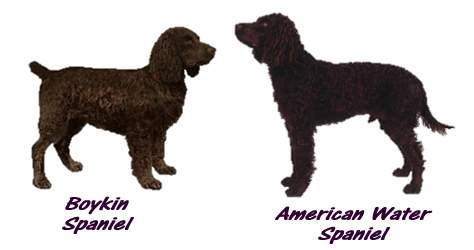
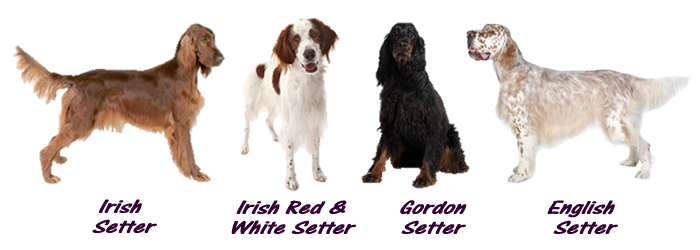
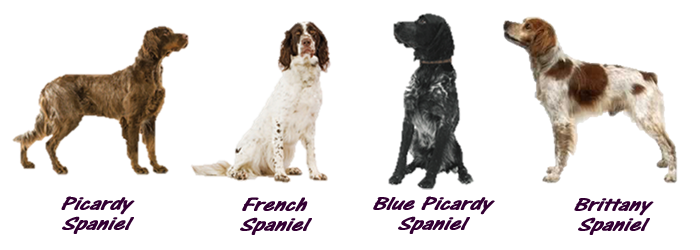
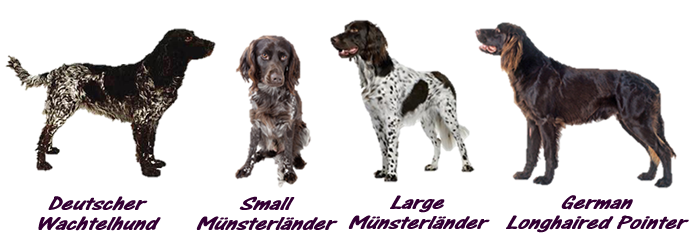
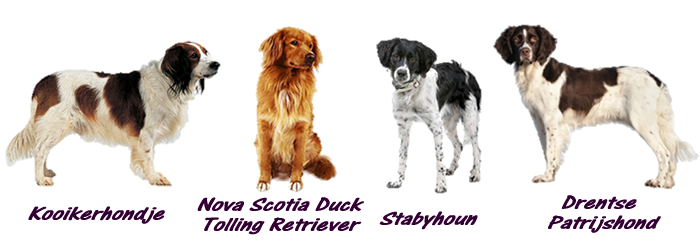
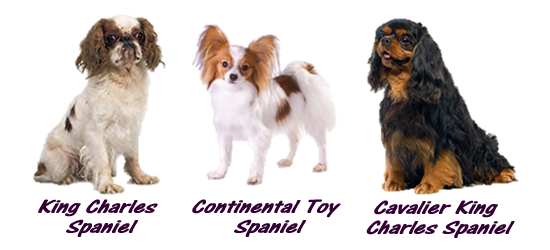


 RSS Feed
RSS Feed